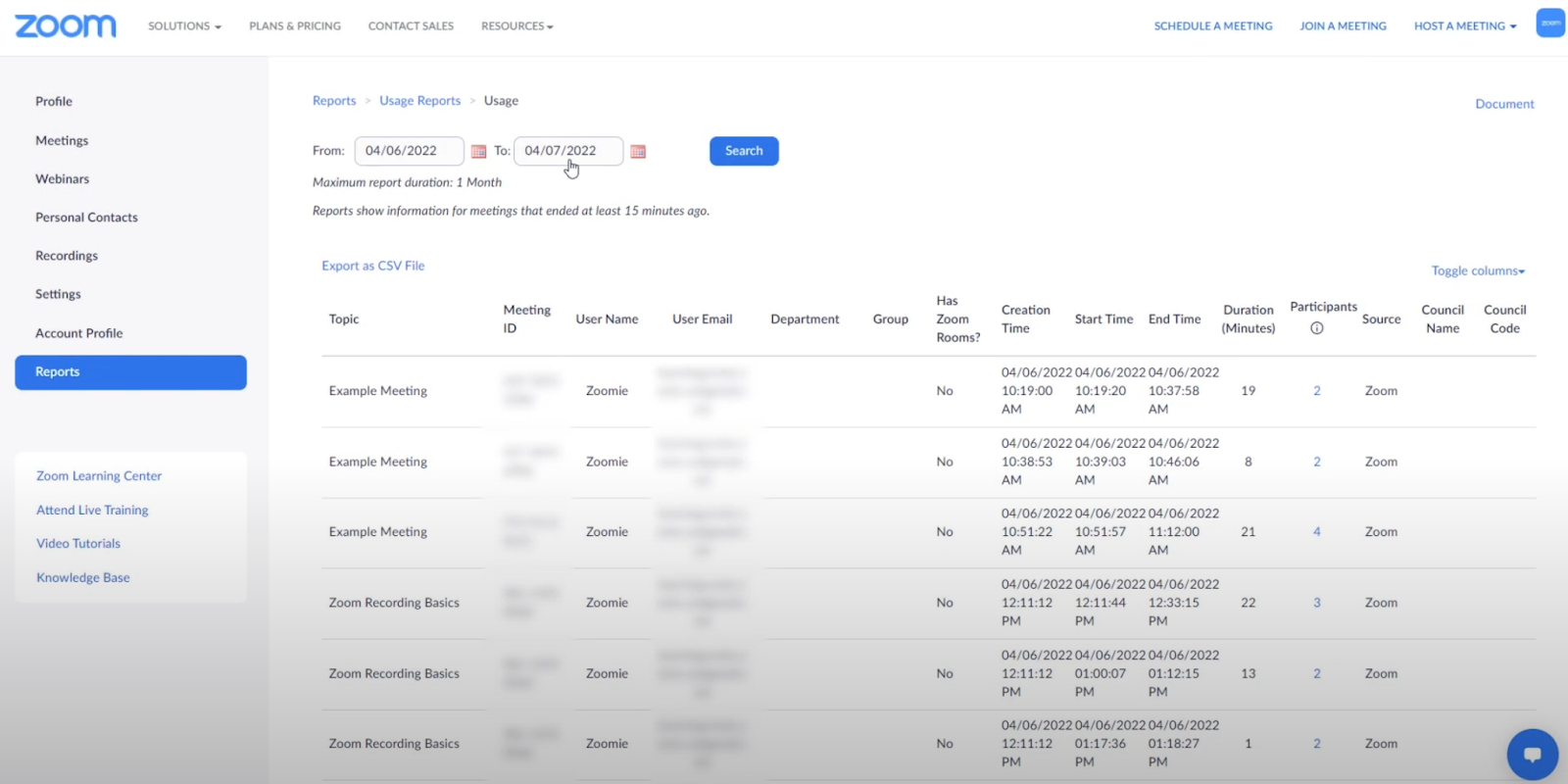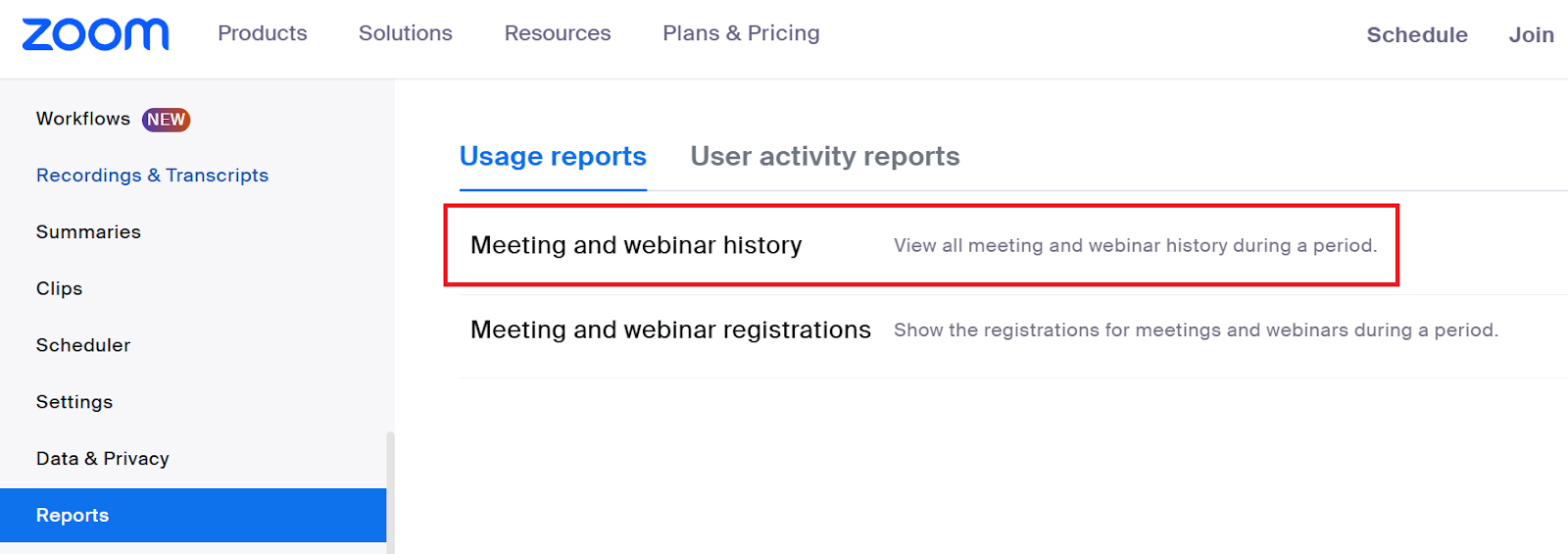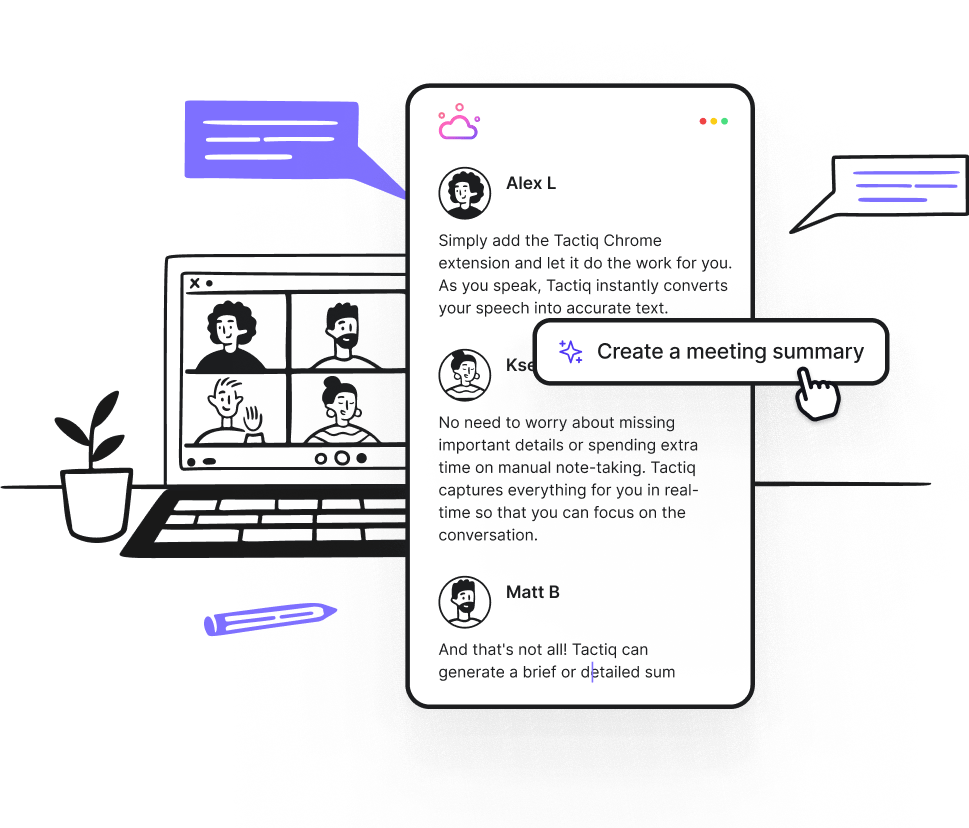Zoom Attendance Report: Everything You Need to Know
August 7, 2024
August 7, 2024
October 7, 2025
October 7, 2025
Zoom meetings are a core part of online communication. A Zoom attendance report gives you that data, so you can track meeting participants, analyze engagement, and improve future meetings.
In this article, you'll learn what’s included in a Zoom attendance report, how to download your attendance list, and best practices for keeping accurate records.
What is a Zoom Attendance Report?

Image from Zoom
A Zoom attendance report shows a list of meeting participants, including their names, email addresses (if signed in), and their join and leave times. You can access reports through Zoom’s usage reports tab after the Zoom meeting ends.
Reports are available up to one month after a meeting ends and become accessible about 15 minutes post-meeting.
These reports are essential for:
- Tracking attendance and participant duration
- Reviewing who joined and left, and when
- Exporting data to a CSV file for record-keeping or analysis
Key details included in a Zoom attendance report:
- Participant display names and Zoom account emails (if authenticated)
- Join time, leave time, and total duration
- The Zoom meeting ID
- Options to show unique users or include meeting data in the export
You can access attendance data from the By Meetings or By Users tabs in the Active Hosts report or via the Usage section if you’re a licensed user.
Pro Tip: Use Tactiq during your Zoom meetings to get real-time transcripts with speaker identification, a helpful way to cross-check attendance and whether attendees participated in the discussion.
How to Download the Attendance List After the Meeting
Once your Zoom meeting ends, you can download the attendance report to see who joined, when, and for how long. Reports are available up to one month after the meeting and are accessible through the usage reports section.
If you’re an account owner or admin:
- Sign in to the Zoom web portal.
- Go to Account Management > Reports > Usage Reports.
- Click Active Hosts.

- Use the date range picker or search by meeting ID to find the desired meeting.
- Under the Participants column, click the number to see the full list of meeting participants.
- Optional: Select:
- Show unique users
- Export with meeting data
- Click the Export button to download the CSV file.
If you’re a licensed user:
- Sign in at zoom.us.
- Click Reports > Usage Reports > Usage.

- Use the date range or meeting ID to find your meeting.
- Click the participant count under the Participants Source column.
- Optional: Check Show unique users and Export with meeting data.
- Click Export to download your meeting report.
Note: Reports only include participants who joined the actual meeting (not those in the Waiting Room), and the meeting must have ended at least 15 minutes ago.
How to See the Number of Attendees in a Zoom Webinar
If you're hosting a Zoom Webinar, you can view and export detailed attendee information, including join/leave times, total participants, and engagement data.
How to access webinar attendance
- Sign in to your Zoom account in a browser.
- Go to Reports > Usage Reports > Meeting and Webinar History.
- Set your date range (up to one month) or search by meeting ID.
- Locate the webinar, then click the number under the Participants column.
- A window will open showing the list of attendees, including:
- Display names
- Join and leave times
- Duration
- Emails (if participants were signed in)
- Click the Export button to download the data as a CSV file.
Note: Reports exclude Waiting Room users and may not include emails for anonymous or guest users.
Why Tactiq Is the Perfect Companion to Your Zoom Attendance Report

Your Zoom attendance report indicates who attended. Tactiq helps you understand what happened and what to do next.
Tactiq is a real-time AI assistant for Zoom meetings that captures every word with speaker identification, then turns that conversation into actionable insights you can share and reuse.
How Tactiq supports your meeting workflow:
- Live Transcriptions with Speaker Identification
- Tactiq gives you a clear, real-time transcript. No need to screen record on Zoom just to remember what was said.
- AI Meeting Summaries
- Automatically generate summaries with action items, decisions, and talking points. No need to rewatch or take notes.
- AI Workflows
- Send meeting outcomes directly to tools like Notion, HubSpot, or Linear. Automate follow-ups, update knowledge bases, or trigger notifications based on what was said.
- Custom Prompts & Meeting Kits
- Ask Tactiq AI specific questions about your meeting or generate updates, follow-up emails, or documentation instantly.
- Search & Share
- Search by keyword, filter by speaker, and share key moments or transcripts with anyone who missed the meeting.
With Tactiq, your Zoom meetings become searchable, shareable, and actionable, making every minute count.
Download the free Tactiq Chrome Extension today!
{{rt_cta_ai-convenience}}
Wrapping Up
A Zoom attendance report helps you see who joined your meeting and for how long, but it doesn’t capture what was discussed. To fully understand meeting outcomes, it helps to combine attendance data with transcripts, summaries, and action items.
Tactiq offers real-time transcription, speaker identification, and AI workflows that make it easy to follow up, share insights, and keep your team aligned.
Download the free Tactiq Chrome Extension today to start making your Zoom meetings more organized and actionable.
FAQs
What is a Zoom attendance report, and why should you use it?
It’s a report showing who attended your Zoom meeting, including join/leave times. Use it to track participation, analyze engagement, and follow up after meetings.
How do you access and customize a Zoom attendance report?
Go to Reports > Usage Reports, set a date range, and click the number in the participants column. You can show unique users, include meeting data, and export the CSV file.
What steps can you take to ensure your Zoom attendance data is accurate?
Require sign-in or registration, and use the authentication setting. This ensures accurate names, emails and avoids duplicates in your attendance reports.
Who can access the Zoom attendance report?
Only the meeting host, account owner, or users with a custom role that includes Usage Reports permission on a Pro, Business, Enterprise, Education, or API account can access the attendance report.
Where can I find the list of past attendees from a Zoom meeting?
Go to Reports > Usage Reports, find your meeting report, and click the number in the participants column to view the list of meeting participants.
A Zoom attendance report gives you a detailed log of who attended your meeting, including join and leave times. By using these reports, you can track participation, ensure accountability, and identify engagement trends, helping you run more effective and productive meetings.
To access your report, sign in to Zoom, go to 'Reports', select 'Usage', set your date range, and click the number in the 'Participants' column for your meeting. You can customize the report by showing unique users, including extra meeting data, and exporting it as a CSV file for easy analysis.
Ask participants to sign in to their Zoom accounts and require registration before meetings. This ensures names and emails are captured correctly, making your attendance reports more reliable and useful for follow-ups or accountability.
Tactiq provides accurate transcriptions and AI-generated summaries, so you have a complete, searchable record of your meetings. You save time with automated summaries, instant note formatting, and easy sharing, making post-meeting tasks and collaboration effortless.
Log into the Zoom web portal, access the 'Reports' tab, and use 'User Activity Reports' to view attendance logs. You can set date ranges or filter by user email, helping you track participation over time and maintain organized records for all your meetings.
Want the convenience of AI summaries?
Try Tactiq for your upcoming meeting.
Want the convenience of AI summaries?
Try Tactiq for your upcoming meeting.
Want the convenience of AI summaries?
Try Tactiq for your upcoming meeting.









